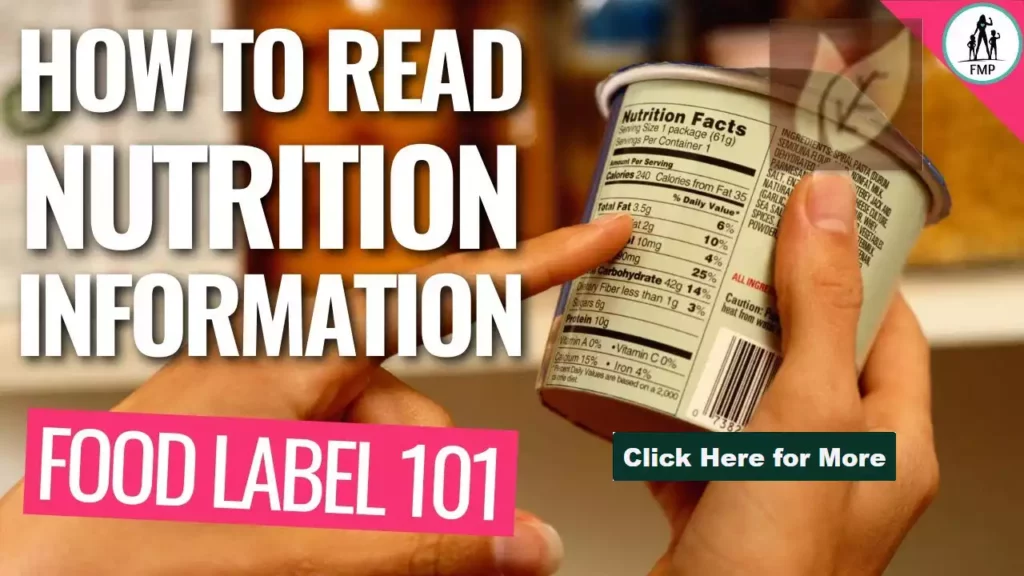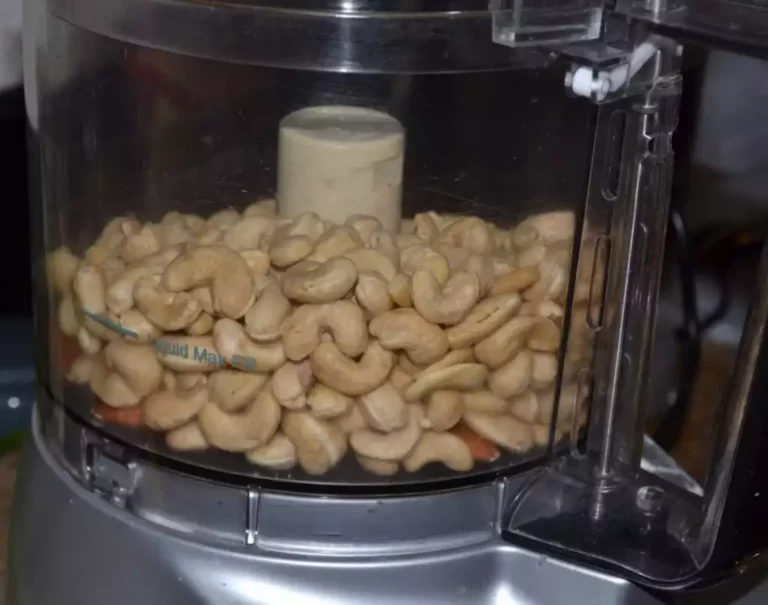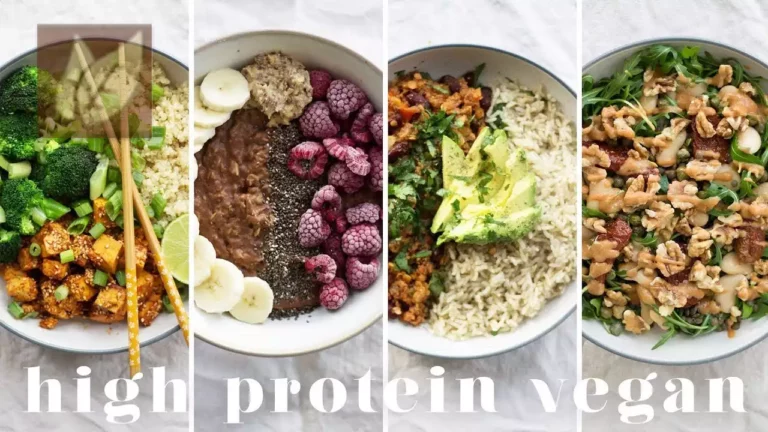Conquer 6 Crazy Food Labels Secrets

This article shows you how to Conquer 6 Crazy Food Labels Secrets. You’ve seen and heard it before; food labels claiming to contain real fruits and vegetables.
These labels make you think you are eating something nutritious and healthy. The untrained person is unable to decipher when they are being fooled and often end up with sugary, junk food products.
Food companies are extremely clever and spend billions of dollars on persuasive marketing in order to fool their consumers into buying these fake products. Grocery stores and television food commercials are rampant with these devious claims.
While the FDA does regulate some food label claims, claiming a product contains real fruit or vegetables has not yet been included in the regulations.
Nutrition Facts
You can use the following label-reading skills to make quick, informed decisions about food to help you choose a healthy diet.
Serving Information | Calories | Nutrients | The Percent Daily Value (%DV) | Nutrition Facts Label Variations For additional information on the new Nutrition Facts label, go to www.fda.gov/NewNutritionFactsLabel.
To make it easier for you to focus on the sections that will be discussed further, we have colored certain parts of the Nutrition Facts label.
The Nutrition Facts label for frozen lasagna (#1 on sample label) When reviewing the Nutrition Facts label, look at the number of servings in the package (servings per container) and the serving size.
Sugars on the Nutrition Facts label include both sugars naturally present in many nutritious foods and beverages, such as milk sugar and sugar in fruit, as well as any added sugars that may be present in the product.
Additions to the Nutrition Facts label include sugars that are added during processing of foods (such as sucrose or dextrose), foods packaged as sweeteners (such as table sugar), sugars from syrups and honey, and sugars from concentrated fruit and vegetable juices.
On the Nutrition Facts label, some nutrients, such as total sugars and trans fat, do not have a %DV.
The Nutrition Facts label does not list the %DV for Trans Fat, Protein, or Total Sugar.
Added Sugars and naturally occurring sugars (such as those found in fruit and milk) are included in the Total Sugars listed on the Nutrition Facts label.
There are various formats of Nutrition Facts labels that food manufacturers are allowed to use. This page has used the lasagna label as an example, but there are other formats that manufacturers can use.
Healthier Choice
Nutrition labels indicate which foods have a high carbohydrate content, low fat and fiber content, as well as some protein.
If you have special dietary needs or just want to make healthier food choices, you should pay attention to the Nutrition Facts label.
The Nutrition Facts label tells us how healthy or unhealthy a food is, according to the USDA.
Studies have shown that nutrition labels are successful in influencing consumers’ choices and helping them make healthier decisions.
According to a study published in the Journal of the Academy of Nutrition and Dietetics in February 2018, people who read nutrition facts labels were more likely to eat more fruits, vegetables, and whole grains, and drink fewer sugar-sweetened beverages. Comparing similar products’ labels can also help you choose wisely.
Calories Per Day
In general, nutrition experts recommend 2,000 calories a day, however, your individual requirements may be higher or lower depending on a number of factors, including your age, sex, height, weight, and level of activity.
There is no set number of calories you need to consume each day.
Ingredients List
To make healthy, informed food decisions, learn how to read nutrition labels and understand food label claims and ingredients lists.
Nutrition labels are required by law on all foods, including fresh fruit and vegetables, and food sold in restaurants.
The Nutrition Facts label provides a wealth of information about a food and categorizes nutrients into four different categories: calories, fat, saturated fat, cholesterol, sodium and carbohydrates.
Food labels are everywhere – on the front and back of packages, on snack bars and cans. A label is required on most food sold in the United States, but they can be confusing.
Many people don’t know how to interpret the information on the label or what to look for on the label. Understanding how to read food labels can help consumers make healthier food choices and inform food policy.
So how do you Conquer 6 Crazy Food Labels Secrets?
The best way to get your daily intake of real fruits and vegetables is to eat the real thing. Here are some tips on how to maximize your fruit and vegetable intake:
Eat a variety of fruits and vegetables from the colors of the rainbow.
Every color represents different vitamins and minerals that are essential for good health—so eat up!
Aim for at least 5 cups of fruits and vegetables per day (and potato chips do not count!)
Keep fruits and vegetables out in the open where you can see them.
Cut up slices of fruits and veggies and place in containers in a visible spot in the fridge.
If you can’t seem to get your daily 5 cups in, buy pre-cut or pre-packaged fruits and veggies. It may cost you a little more, but your health is worth it!
Add fruits and vegetables to anything you can!
Stuff them into your sandwiches and add them to your main dish, either steamed or raw!
Use fruits and vegetables as ingredients.
Try unsweetened applesauce as a fat-free replacement for oil in baking recipes. Add pureed cooked vegetables to thicken soups or stews.
If you are still interested in getting your fruits and vegetables through other types of food products, here is how to determine if the food contains the real thing or not.
One of the first three ingredients listed should be fruit: fresh fruit, fruit puree, dried fruit, fruit juice, or fruit concentrate. Conversely, there is no real fruit if the label states natural fruit flavoring, artificial fruit flavoring, or fruit pigments.
With regards to fruit juice, the label should say “real fruit juice”. Beware of juice labels that use the word “drink” instead of “fruit juice”.
However, fruit juices are not necessary. It is better to eat the fruit itself and have some ice cold water to quench your thirst. Fruit juices may be a good source of some vitamins, though they may also be high in sugar and low in fiber.
Some other things to keep in mind:
Potato chips are not the best way to eat your potatoes. Chips are made from potatoes, but they are prepared by cooking in oil. They are high in fat and salt—so save those chips for a real special occasion!
Fruit bars are high in sugar. Even though fruit bars usually contain some fruit, they are low in fiber and contain high amounts of sugar and calories. They actually stick to your teeth and may cause dental caries as well.
Dried fruit leathers as well as dehydrated fruits in cereals can be misleading. It is important to pay attention to the ingredients or you may end up with high sugar products.
For example, fruit roll ups are loaded with lots of corn syrup, while the raisins in raisin bran are coated with sugar. It is best to opt for 100% bran flakes and add raisins.
While dehydrated fruit sold on their own may be a more healthful option since they usually retain most of their nutritive value, sometimes they can also be coated with sugar to make them sweeter.
Fruits and vegetables provide vitamins and minerals that are essential to health, and fresh produce provides the most nutritional value.
Incorporating fruits and vegetables into meals is an obstacle for many. Choosing the real thing is always best. However, knowing how to decode food labels will also make a difference. Make small changes over time and see what tips and tricks work for your lifestyle.






.webp)